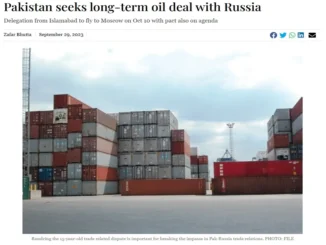
After the truly impressive achievements of the last decade, renewable energy capacity in the country is now over 90 GW and its share in total electricity generation is reaching 10 per cent. But this needs to be seen in perspective. The share of renewables in electricity in Germany is over 46 per cent and in UK it is over 42 per cent.
The good news is that the costs of solar and wind power are now lower than the cost of electricity from fossil fuels by a wide margin. The achievement of the ambitious national target of 450 GW of renewable capacity would not impose a higher cost on the consumer, nor would it need any subsidy from government. A recent TERI study has found that total system costs do not rise with the share of renewables going up to 40 per cent. The challenge is meeting the demand for electricity without burning coal when the sun is no longer shining and the wind is not blowing. Last year, bids were invited for storage by SECI (Solar Energy Corporation of India) and the results were very encouraging. The combined rates of renewable energy with storage were comparable with the rates from new coal based thermal power plants. Of the two successful bids, one planned to use pump storage and the other, battery storage.
Pump storage projects have been used traditionally for meeting peaking power needs. They are considered as low hanging fruit for storage. The potential sites in the country can be quickly identified. These would be with the state governments. These are capital-intensive, long gestation projects like other hydro power projects. One pragmatic course for speedy development of these would be to prepare DPRs (Detailed Project Reports) and then invite bids for construction, maintenance and operation on a long-term concession agreement of, say, 30 years. The concessionaire may be paid an annuity rather than for electricity generated. This would be a practical way to move forward as at present there are too many imponderables regarding prices for peaking power that would emerge in the coming years. Private investment would be fully de-risked from variations in power generating potential, which would depend on water availability, as well as pricing over the 30 years life of the concession agreement. A state-backed agency is in a better position to take these risks up front. The new DFI (Development Finance Institution) could provide long-term fixed interest rate debt for these projects. With this approach, investor interest should be high and attractive bids should be received.
But the pump storage potential in the country is a fraction of the total need. Batteries offer considerable promise. Globally the price of grid battery storage has been falling sharply. From around 800 dollars a kwh in 2013 it has come down to a little over 100 dollars a kwh. India has been forward looking by including the manufacture of batteries in the PLI (Production Linked Incentive) scheme. The way to become Atmanirbhar (self-reliant) and have energy security would be to invite bids for battery storage with the stipulation that a minimum feasible level of value addition has to take place in India and that the supply would be from 2023, providing enough time for a battery manufacturing plant to come up after winning the bid. Inviting repeated bids, as has been done for solar power, would create a competitive industry structure. With economies of scale, costs and prices should come down. Government could create a Special Economic Zone (SEZ) for battery manufacturing,providing a duty free import regime for capital goods and raw materials to keep costs in line with global levels. Sales to the domestic tariff area would then need to be considered as fulfilling obligations of being in the SEZ. Exemption from taxes on profits need not be given to these manufacturing units.
Solar thermal plants also offer promise. In these, solar energy is stored in the day in the form of heat in molten salt and this is used at night to run a normal turbine to generate electricity. Costs for these have also been falling globally. NTPC and BHEL could jointly put up a pilot plant. Alternatively, bids could be invited for a solar thermal plant with storage and price discovery would take place.
With these measures, storage could become competitive vis- à-vis fossil fuels soon. Transition to a fossil-free electricity system would then impose no additional costs. This would be a major milestone in the trajectory to net carbon neutrality.



